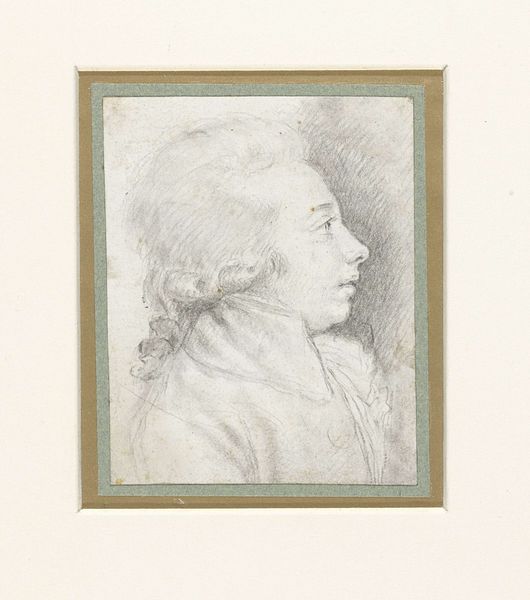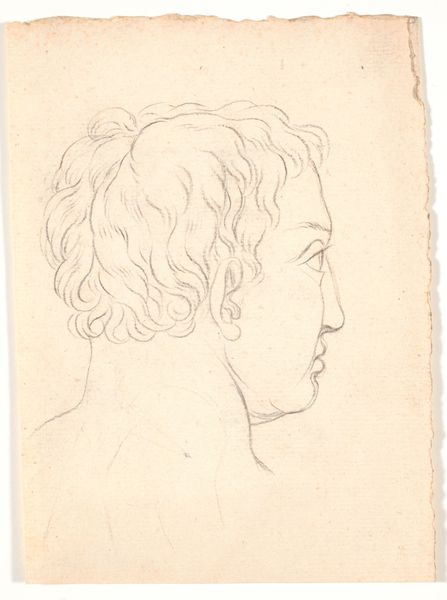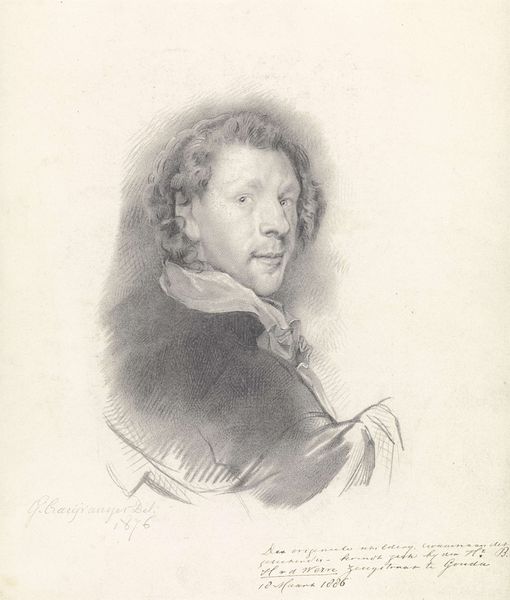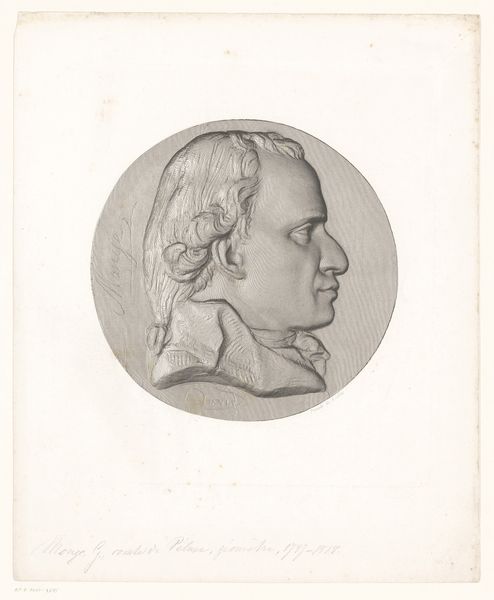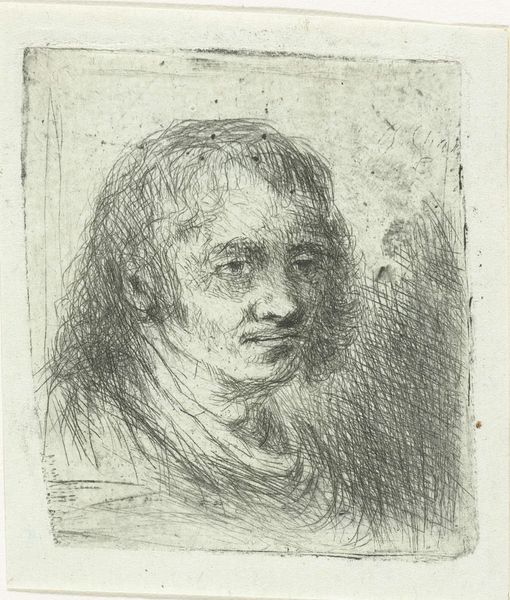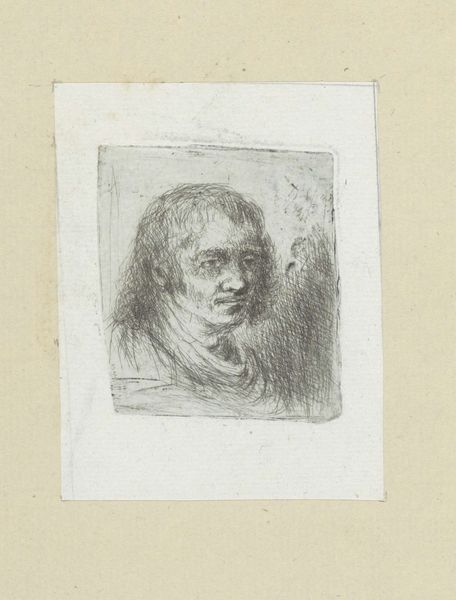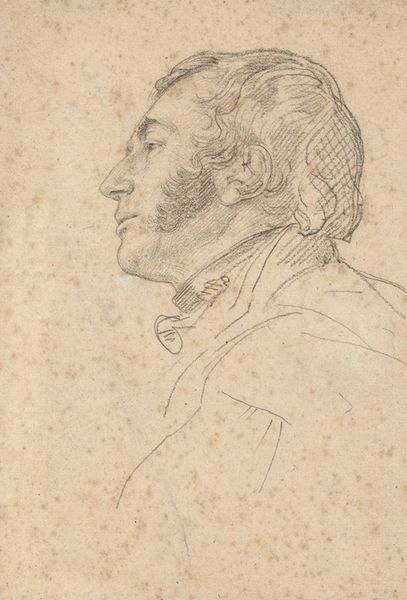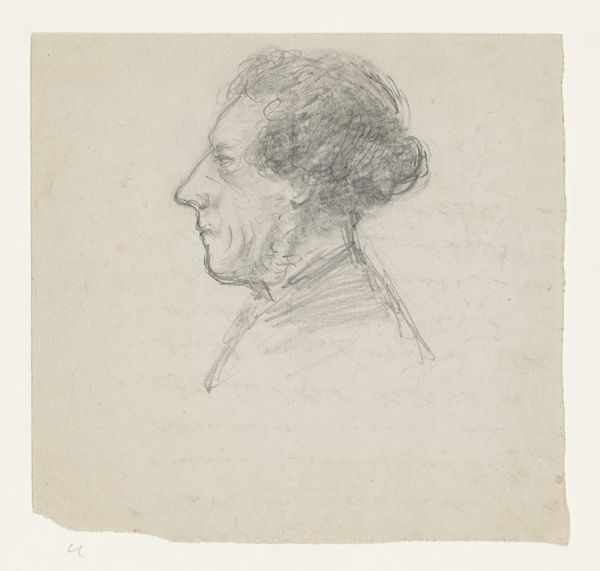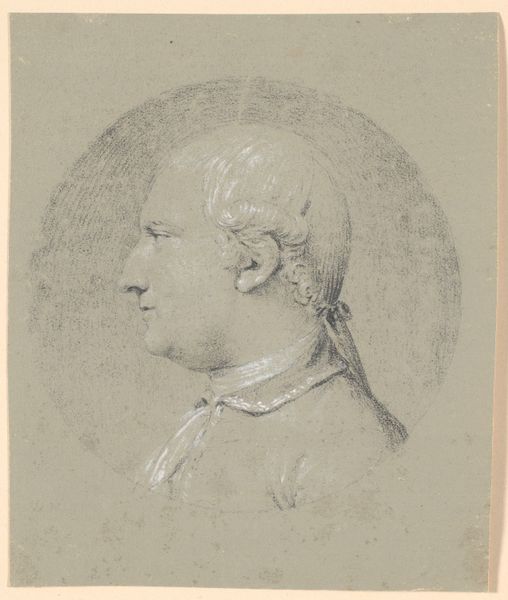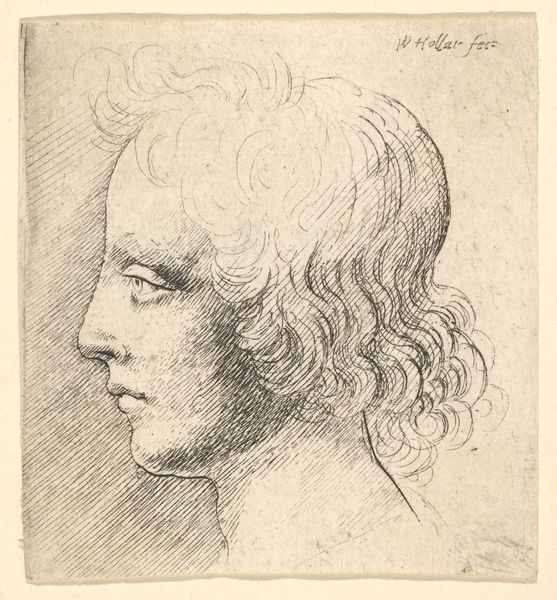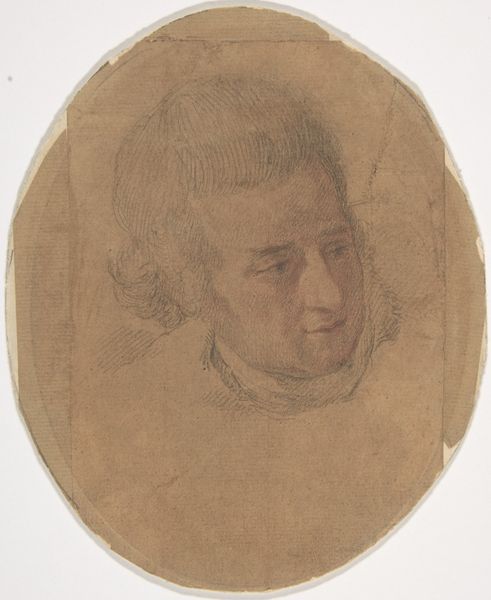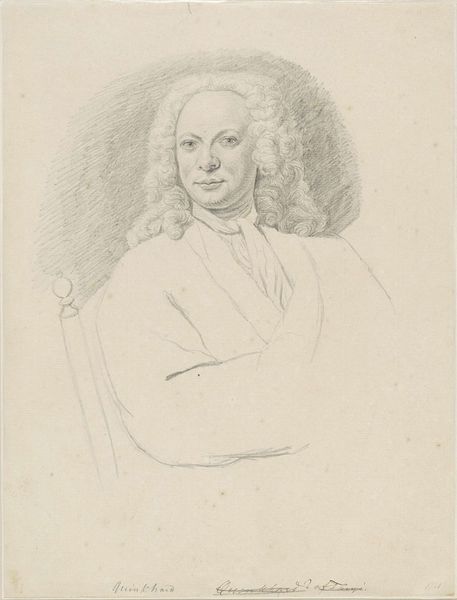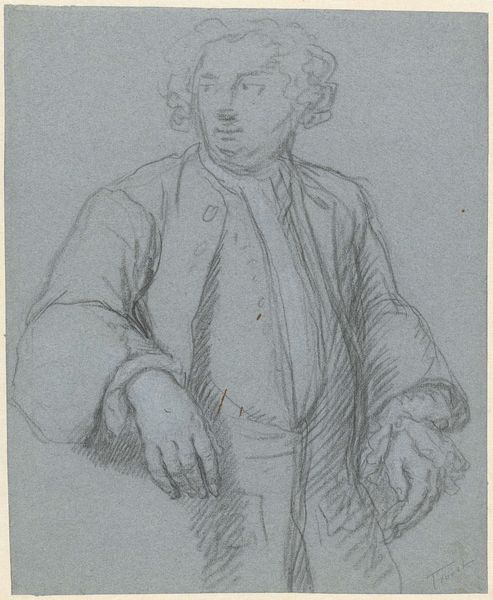
drawing, pencil
#
portrait
#
drawing
#
neoclacissism
#
caricature
#
caricature
#
pencil
#
academic-art
Dimensions: height 151 mm, width 152 mm
Copyright: Rijks Museum: Open Domain
Editor: Here we have Johannes Ziesenis' "Self-Portrait of the Draughtsman," created sometime between 1780 and 1790, a drawing rendered in pencil. The monochromatic palette creates a somewhat serious, reflective mood, but it's also almost a caricature. How do you interpret this work? Curator: What I see is an intriguing dialogue between the self and the era. Ziesenis, by choosing the mode of caricature, adopts a recognizable form, loaded with symbolic weight. But why self-caricature? It's not merely about visual distortion; it's a commentary. What kind of cultural anxieties or societal critiques do you think Ziesenis might be hinting at through this personalized exaggeration? Editor: It's interesting that you frame it as anxieties! It hadn’t occurred to me. It's as if he’s aware of his flaws and is almost highlighting them. Was self-deprecation a common theme in Neoclassical art? Curator: Not in the heroic mode we often associate with Neoclassicism, no. This perhaps leans into the enlightenment's fascination with the self, observed, analyzed, but also, presented. The act of creating a "self-portrait caricature" inherently acknowledges the gap between how one perceives oneself and how one is perceived by society. Do you notice any particular features that stand out? Editor: His nose and perhaps his open mouth are the most prominent. Is there a message he is passing through these? Curator: It brings us to an examination of symbols. The prominent nose is it a conscious adoption of comedic characterization that points back to a tradition of mockery or even social critique? As for the open mouth, is he about to speak? Is this artist's statement a vocal declaration, about to be unleashed on the world? Editor: I hadn't thought about it as him making some pronouncement. So much to consider within such a simple sketch! Curator: Indeed! And, as we continue to look, perhaps Ziesenis invites us to inspect not just *him*, but ourselves and our own self-representation within our societal narratives. The simple sketch, we see, it isn’t that simple.
Comments
No comments
Be the first to comment and join the conversation on the ultimate creative platform.
